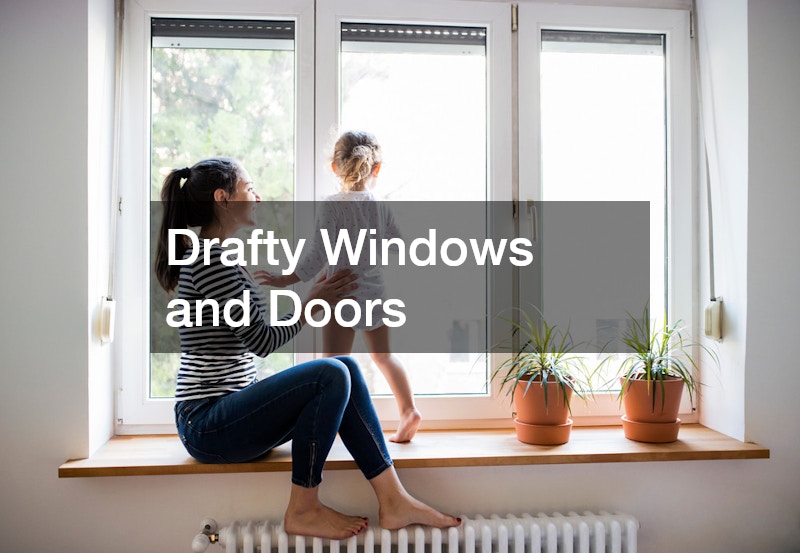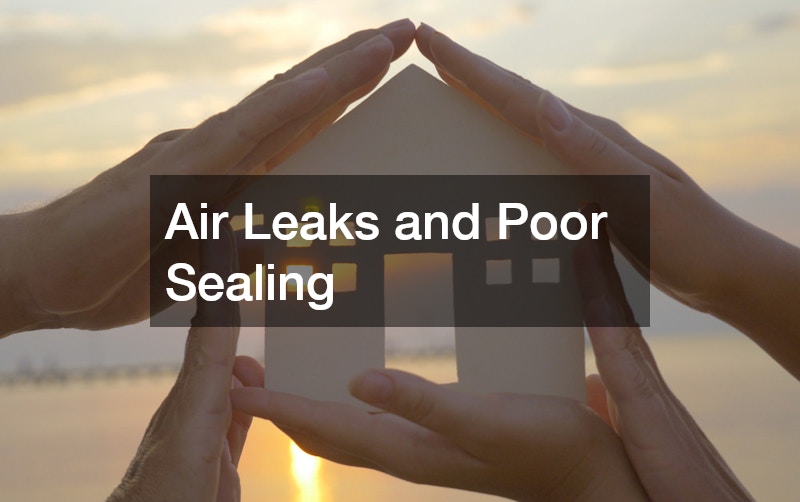As energy costs continue to rise and environmental concerns become more pressing, homeowners are increasingly prioritizing energy efficiency. But while new appliances and smart thermostats grab the spotlight, the most persistent energy efficiency problems often stem from hidden or overlooked areas of the home. These issues not only lead to higher utility bills but also decrease overall comfort and sustainability. Identifying and resolving common energy inefficiencies can lead to major savings and a healthier, more comfortable living environment.
The key to creating a truly energy-efficient home lies in understanding where energy loss occurs and implementing strategic fixes. From drafty windows to leaky ducts and outdated insulation, there are a variety of problem areas that need attention. This comprehensive guide explores the most common energy efficiency problems in residential properties and offers practical, proven solutions to help homeowners take control of their energy consumption.
Drafty Windows and Doors
One of the most common culprits of energy loss in homes is drafty windows and doors. Gaps around the frames allow conditioned air to escape and unconditioned air to enter, forcing your HVAC system to work harder to maintain the desired indoor temperature. This results in both increased energy consumption and higher utility bills.
A quick inspection can help you determine whether your windows and doors are airtight. Holding a lit candle near the edges can reveal air leaks when the flame flickers. If leaks are found, consider weatherstripping or caulking as a temporary solution. For a more permanent fix, upgrading to energy-efficient windows is highly recommended. A reputable window installation contractor can guide you through options such as double- or triple-pane windows, which offer superior insulation and reduce heat transfer significantly.
Complementing these upgrades with insulated window treatments can provide an extra layer of protection. Heavy drapes or cellular shades help block drafts and improve thermal performance. While these may seem like small improvements, they address one of the most impactful energy efficiency problems found in residential settings.
Poor Attic Insulation
Attic insulation plays a critical role in regulating indoor temperatures. Poor or outdated insulation allows heat to escape during winter and enter during summer, placing a heavy burden on your HVAC system. Unfortunately, many older homes still contain subpar insulation, making this a top priority for homeowners looking to improve efficiency.
The first step is to assess the current insulation level. If your attic floor joists are visible, that’s a clear sign that more insulation is needed. Upgrading to high-performance materials like fiberglass batts, cellulose, or spray foam can dramatically reduce heat transfer and improve comfort.
Hiring a spray foam roofer ensures proper installation and air sealing, which are essential for maximizing performance. Spray foam not only insulates but also acts as an effective air barrier, preventing drafts and moisture buildup. Solving attic insulation issues is one of the most cost-effective ways to resolve energy efficiency problems, with a relatively quick return on investment.
Leaky Ductwork
Ductwork distributes heated and cooled air throughout your home, but if it’s leaky or poorly insulated, a significant amount of energy is wasted before it even reaches your living spaces. Studies show that up to 30% of conditioned air can be lost through leaky ducts, especially in unconditioned spaces like attics, basements, or crawlspaces.
Signs of duct leakage include uneven heating or cooling, high energy bills, and visible dust buildup near vents. To address this, have your ducts inspected and sealed using mastic or foil tape. Duct insulation may also be necessary in colder climates to prevent heat loss.
Many HVAC companies offer duct sealing services as part of a comprehensive energy audit. Fixing ductwork is a foundational step in any effort to address energy efficiency problems, as it ensures that your HVAC system operates as efficiently as possible.
Inefficient Heating and Cooling Systems
Aging or inefficient HVAC equipment is another major contributor to high energy consumption. Systems that are more than 10–15 years old may not operate at peak efficiency, even if they are still functional. This leads to higher energy bills and decreased comfort throughout your home.
Start by scheduling a professional inspection with a qualified HVAC company to evaluate the performance of your current system. They can assess airflow, refrigerant levels, and overall condition to determine whether repairs or a replacement are necessary. Investing in a high-efficiency furnace or air conditioner can lead to substantial savings over time.
It’s also important to stay on top of regular maintenance. Routine filter changes, coil cleanings, and thermostat calibration all contribute to better performance. For older heating systems, seeking help from local furnace repairs professionals can ensure your equipment is running safely and efficiently.
Air Leaks and Poor Sealing
Beyond doors and windows, air leaks can occur in less obvious places such as plumbing penetrations, electrical outlets, and attic hatches. These small gaps allow conditioned air to escape and unconditioned air to enter, leading to energy waste and discomfort.
Conducting a blower door test during a home energy audit is one of the most effective ways to identify hidden leaks. Once located, they can be sealed using spray foam, weatherstripping, or caulk. This process is labor-intensive but delivers significant improvements in energy performance.
By systematically sealing leaks throughout the home, you reduce the strain on your heating and cooling systems. This not only lowers energy bills but also extends the lifespan of your HVAC equipment. It’s a simple yet powerful solution to a widespread energy efficiency problem.
Inadequate Insulation in Walls and Floors
While attics get most of the attention, insulation within walls and floors also plays a critical role in maintaining indoor temperatures. Inadequate insulation here leads to thermal bridging, where heat moves through the structure and into or out of the home.
Installing blown-in cellulose or spray foam insulation can help address this issue. These materials fill gaps and crevices effectively, providing a more complete barrier against heat transfer. A professional energy audit can help determine which areas of the home are lacking insulation and suggest the most effective solutions.
Improving insulation throughout the building envelope is one of the most comprehensive ways to resolve energy efficiency problems. It creates a uniform indoor environment, reduces drafts, and allows your HVAC system to run more consistently and efficiently.
Inefficient Lighting Systems
Lighting may seem like a minor aspect of household energy use, but outdated bulbs and inefficient fixtures can add up over time. Incandescent and halogen bulbs consume far more electricity than modern LED alternatives, and they also produce more heat, increasing cooling costs.
Replacing all bulbs with ENERGY STAR-rated LEDs is a fast, affordable upgrade with immediate benefits. These bulbs last longer, use up to 80% less energy, and are available in various color temperatures to suit your design preferences.
Beyond bulbs, consider installing occupancy sensors or dimmer switches to reduce energy consumption further. These features provide greater control and help eliminate waste when rooms are unoccupied. While it’s a small change, it addresses a common yet often overlooked energy efficiency problem.
Outdated Appliances and Electronics
Old refrigerators, dishwashers, and washing machines are notorious energy hogs. Even if they still work, they often operate well below modern efficiency standards, using significantly more water and electricity than newer models.
When shopping for new appliances, look for those with ENERGY STAR certification, which guarantees superior efficiency. Upgrading to energy-efficient models can save hundreds of dollars annually in utility costs while reducing environmental impact.
Electronics should also be assessed. Devices like TVs, gaming consoles, and chargers continue to draw power even when not in use. Using smart power strips or unplugging devices when not needed can help reduce this “phantom” load. Together, these small changes can address persistent energy efficiency problems in your home.
Poor Roof and Attic Ventilation
Proper ventilation in your attic and roof structure is crucial for maintaining temperature balance and preventing moisture buildup. Without adequate airflow, hot air becomes trapped, increasing cooling demands in the summer and creating the potential for ice dams in the winter.
Ventilation systems should allow cool air to enter through soffit vents and exit through ridge or gable vents. A well-designed system helps extend the lifespan of roofing materials, prevents mold growth, and improves indoor comfort.
If you suspect ventilation issues, consult local roofers who can assess your current system and recommend improvements. Pairing ventilation upgrades with other attic insulation enhancements can result in dramatic energy savings and comfort gains.
Inefficient Exterior Building Materials
The exterior shell of your home—siding, roofing, and decking—affects how well it insulates and protects against weather extremes. Older materials tend to have poor thermal performance, leading to increased heating and cooling demands.
Newer technologies like insulated siding and reflective roofing materials can significantly improve efficiency. Consulting with deck suppliers or siding experts can help you choose products that enhance energy performance without sacrificing style.
When replacing roofing materials, prioritize cool roofs that reflect more sunlight and absorb less heat. This reduces the need for air conditioning, especially in hot climates, and contributes to long-term energy savings.
Mismanaged Thermostat Settings
Your thermostat is the command center for your home’s climate control, and mismanagement here can undermine even the best energy upgrades. Setting the temperature too high or low, or failing to adjust it for time of day and occupancy, can lead to unnecessary energy use.
Programmable or smart thermostats offer a solution. These devices allow you to create temperature schedules, monitor usage trends, and adjust settings remotely. Many models also offer geofencing capabilities, which detect when you leave or arrive home and adjust accordingly.
Proper thermostat usage is one of the simplest ways to solve energy efficiency problems. It optimizes your HVAC system’s operation and ensures you’re not wasting energy when it’s not needed.
Oversized or Undersized HVAC Systems
Bigger isn’t always better. An oversized HVAC system will cycle on and off frequently, leading to inconsistent temperatures and increased wear. An undersized system, on the other hand, will struggle to meet demand, running constantly and consuming excessive energy.
To ensure optimal performance, your HVAC system must be properly sized for your home’s square footage, insulation level, and climate. An experienced ac repair contractor can perform a Manual J calculation to determine the correct system size and suggest appropriate equipment.
By ensuring your system is neither too big nor too small, you prevent many of the energy efficiency problems caused by improper sizing, including short cycling, high humidity, and poor comfort levels.
Overlooked Maintenance and Repairs
Many efficiency issues stem from neglected maintenance. Dirty filters, clogged vents, and blocked outdoor units all reduce system performance. Regular upkeep is essential for keeping your home running at peak efficiency.
Stay on top of air conditioner repairs, clean filters monthly, and have your system inspected at least once per year. Schedule seasonal checkups with a trusted HVAC professional to identify issues before they become major problems.
These small steps are often the most effective in preventing energy efficiency problems. Maintenance might not seem exciting, but it’s the foundation of a well-performing, cost-effective household.
Energy efficiency isn’t achieved through a single upgrade—it’s the result of strategic, informed choices throughout the home. From sealing drafts and upgrading insulation to investing in better appliances and staying on top of maintenance, each step plays a crucial role. Tackling these common energy efficiency problems can lead to immediate cost savings, improved comfort, and a smaller environmental footprint.
Whether you’re working with local roofers to improve ventilation, hiring an HVAC company for a system overhaul, or simply adding new window treatments to reduce solar gain, every action matters. Even consulting with professionals like a window installation contractor or an ac repair contractor ensures you’re approaching problems with expert insight.
By proactively addressing inefficiencies, you can transform your home into a model of performance and sustainability. Energy efficiency isn’t just a trend—it’s a smart, responsible way to live. Be sure to reach out to the top local experts in your area to ensure your home can operate at peak energy efficiency. They can help you find solutions that will last for years to come. Ask friends and family for references if this is your first time investing in home improvements.






